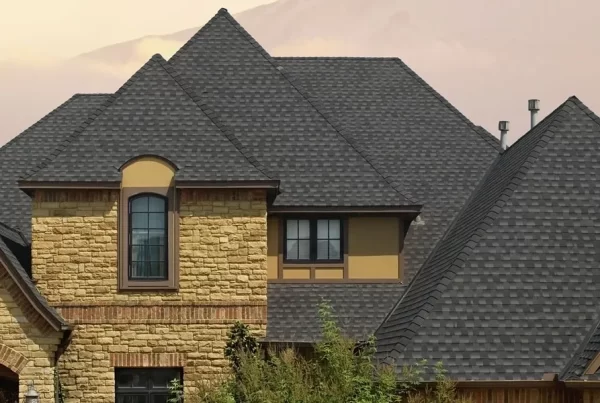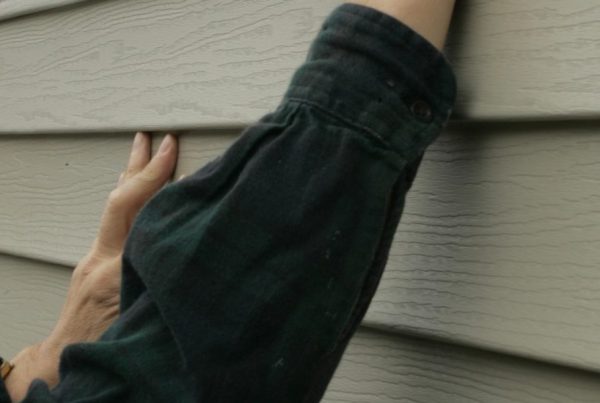Selecting the correct roof is one of the biggest decisions for residential or commercial building projects affecting the appearance, usability, and durability of a house or other structure. Two types of roof design – flat and pitched roofs have strengths and weaknesses that you should consider. The smooth and contemporary look of flat roofs make them preferred for possibility of extra living area outside and to access upper levels more easily. On the other hand, the inclined roofs, as they have a traditional slope, let water drain down more effectively and have a traditional look.
Identifying the general distinctions between both types of roofs and considering the advantages and disadvantages of each is crucial in decision making. Whether you have a new building project or are just thinking of changing your roof, this blog post will examine the merits of flat and pitched roofs, and the costs of each so that you can make an informed decision on which type of roof to install.
Flat Roofs
A. Pros of Flat Roofs
Flat roofs offer several advantages that make them a popular choice for many homeowners and commercial property owners:
- Cost-effectiveness: An important feature of the flat roof is its lower cost in comparison with other types of roofs. They use less material and man power while installing it compared to pitched roof hence ideal for any person cutting on costs or any construction project.
- Usable space: One of the advantages of the flat roofing system is the available space which can be exploited in one way or the other. For instance, rooftop gardens and terraces, outdoor living areas, PV systems and playing fields and courts are among the many ways flat roof designs translate to efficient use of available space.
- Easy maintenance: It is easier to take care of a flat roof than a pitched roof in most cases since it is more accessible. The level surface is advantageous in such a way that in case of any damages such as leaks or any other structural issues, they can be spotted easily and worked on.
B. Cons of Flat Roofs
Despite their advantages, flat roofs also come with some drawbacks that homeowners and property owners should consider:
- Drainage issues: The other downside of flat roofs is that they are prone to water accumulation, especially in cases where they are not inclined adequately or where there are no proper drainage systems in place. Neglecting this can cause water damage, leakage or any structural problem within the building and this will require the attention of a civil engineer.
- Limited lifespan: In some cases, flat roof may be considered to have lesser lifespan as compared to pitched roof. Another issue that has been highlighted is that flat roofing is prone to wear and tear due to effects like exposure to weather elements and quality of materials used may lead to frequent replacement or repair.
- Maintenance concerns: Maintenance of flat roof requires less effort as they are easily accessible however cleaning and inspection is compulsory for frequent gathering of debris and damages caused by water. Skipping on maintenance work can lead to expensive bill or a roof failure at a very early age.
- Insulation challenges: One of the disadvantages of flat roofs is that they tend to be less energy-efficient as compared to pitched roofs; therefore, they could lead to higher energy costs within the building, especially in terms of regulating the internal temperatures. This problem might call for the need to take further measures in insulating in a bid to enhance power conservation.
Pitched Roofs
A. Pros of Pitched Roofs
Pitched roofs, with their classic slope, offer several advantages that make them a popular choice for many homeowners and architects:
- Superior drainage: That is the reason why pitched roofs remain a popular choice since they are better equipped to deal with water drainage. It facilitates in proper draining of water in the form of rain water or melting snow from the roof surface thus reducing formation of pools of water on the roof which might lead to water damage.
- Longer lifespan: As for the roofs with pitch, it should be said that they are longer in their service than flat ones, provided that everything is in order with them and they require regular maintenance. They help in preventing seepage of water through the roof and subsequent deterioration of roofing material, thus increasing the building’s lifespan.
- Better insulation: Presenting the roof in a pitched manner leads to an air space between the roof and the ceiling, leading to better insulation and energy performance. They assist in controlling internal temperatures and this is good for saving money on heating and cooling.
- Various styles: As for the type, pitched roofs are more suitable in terms of design freedom and building looks than flat ones. It also comes in different types such as gable, hip, gambrel, mansard roofs among others to enable homeowners to select a roof that will complement the entire appearance of the house.
B. Cons of Pitched Roofs
Despite their advantages, pitched roofs also come with some drawbacks that homeowners should consider:
- Higher cost: Due to their nature, pitched roofs usually demand more installation material, as well as costs in labor compared to the flat roofing systems. The designs of the roof also determine the complexity of the roofing process and the materials to be used to further the overall installation cost.
- More maintenance: The pitched roofs may be somewhat more difficult to maintain than the flat roofed structures. Cleaning the gutters and checking for any leakage presents challenges given the slant and the width of the roof. Some of the maintenance activities include; Regular maintenance is important to avoid such things like water leakage and deterioration of roof structures.
- Less usable space: As with pitched roofs, the pitch takes up a substantial portion of the square footage in the attic or upstairs area of the house. While additional space above a flat roof may be designed for living or incorporated for other uses, such as placing solar panels, pitched roofs limit the freedom of using the rooftop space.
Cost Analysis
Before developing a preference for one type of roof over the other, one needs to think about how much it will cost initially to install flat or pitched roofing and how much it will cost ultimately to maintain and make repairs.
Besides it is perceived that flat roofs cost less to install than the pitched roofs. Due to their relative design simplicity they need lesser material and labor to construct them which makes them relatively cheaper to build than complex house designs. But the main drawback of doing so is the possible increase in costs related to maintenance and repair work in the long term. Such design has drawbacks to them since they are mostly associated with water drainage and pooling that causes water damage and structural issues if not fixed on time. These repairs may also include changing screens and cleaning gutters and Inspection and repair of leaks is also essential to avoid having to do major repairs later on.
However, pitched roofs normally have relatively steep installation costs because of its design and architecture as well as the time and money needed to install it. Nonetheless, pitched roofs provide for better venting and durability compared to flat roof structures, which may save costs on servicing and repairs. The pitch of pitched roofs enhances the flow of water and even snow making it effective in preventing damage caused by water exceeding the roof durability of roofing material.
There are a number of factors which can be taken into consideration in the total cost of roofing irrespective of type. A number of factors such as the type and-material of the roof that is to be installed, the size and design of the roof, and the expertise of the roof installation crew all determine the ultimate price to be paid. Homeowners should diligently consider these factors and compare the cost of installation with the future costs in order to identify which type of roof is more suitable at the present.
Conclusion
Therefore, several factors have been discussed under flat and pitched roofs, which people should consider when taking a roofing decision. The advantages of the flat roofing include economies, extra space, and low maintenance, but its disadvantage includes: problems of drainage, short lifespan, and problem of insulation. On the other hand, pitched roofs drain better, last longer, are easier to insulate and come in many design varieties although they cost more to have installed and need to be maintained more frequently.
However, it is crucial to consider the strengths and weaknesses of the flat and pitched roofs if they will meet your requirement, choice, and affordable cost. Another factor that should also be considered is the climate, the style of construction as well as the durability of the building in the long-run. For example, people who live in areas with a lot of rainfall or snow may consider pitched roofs to be better at handling water. Likewise, people requiring extra living area outside may require flat roofs, even though they may be demanding to maintain.
Finally, it can be concluded that there is no perfect way to choose the best roof for your home. There are benefits and drawbacks to each; be sure to choose according to your situation. Getting advice from a roofing expert leads to valuable recommendations concerning your case. They can identify your needs, measure your financial capabilities, as well as suggest the best roofing system for your home.
In conclusion, it is equally important to make a wise decision by comparing the flat and pitched roofing systems with especial regard to the pros and cons as well as costs related to both options. Thus, it is crucial that homeowner devotes sufficient amount of time to evaluate these aspects and consult a professional when necessary so that they can make the right choice of the roof, which will effectively protect their homes for many years.





